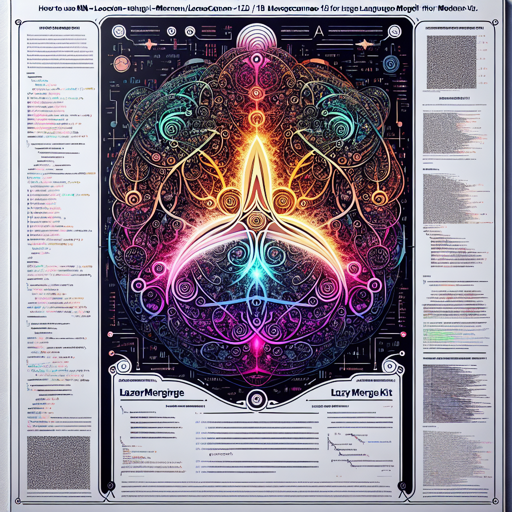Welcome to the fascinating world of machine learning and AI language models! Today, we will explore how to utilize the MN-LooseCannon-12B-v1, an innovative fusion of two powerful models: aetherwiing/MN-12B-Starcannon-v3 and Sao10K/MN-12B-Lyra-v1. This guide will help you navigate the setup and usage of this model seamlessly.
What is MN-LooseCannon-12B-v1?
MN-LooseCannon-12B-v1 is a breathtaking blend of language models designed to push the boundaries of text generation capabilities. Merging requires a delicate balance of parameters which is elegantly handled by LazyMergekit. The model allows you to generate human-like text, making it a valuable tool for developers and researchers alike.
Configuration Breakdown
To understand how to set up the MN-LooseCannon-12B-v1, let’s break down the configuration file. Think of it like a recipe where varying ingredients result in a unique dish. Here’s what each part entails:
- Model: Refers to the pre-trained models being merged.
- Parameters: Defined attributes such as density and weight that dictate the influence of each model.
- Merge Method: Indicates the way the models are connected, in this case, through “ties.”
- Base Model: The backbone of MN-LooseCannon-12B-v1, providing foundational capabilities.
This configuration is pivotal for achieving the right balance and functionality.
Setting Up and Installation
Now, let’s get you set up with MN-LooseCannon-12B-v1. Here are the steps:
- Start by installing the necessary libraries in your Python environment:
- Import the required components for loading and interacting with the model:
!pip install -qU transformers acceleratefrom transformers import AutoTokenizer
import transformers
import torchUsing the Model
Let’s get to the exciting part – generating text!
- Specify the model you will be using:
- Prepare your input messages:
- Tokenize the input using the model’s tokenizer:
- Set up the text generation pipeline:
- Finally, call the pipeline to generate text:
model = "GalrionSoftworks/MN-LooseCannon-12B-v1"messages = [{"role": "user", "content": "What is a large language model?"}]tokenizer = AutoTokenizer.from_pretrained(model)
prompt = tokenizer.apply_chat_template(messages, tokenize=False, add_generation_prompt=True)pipeline = transformers.pipeline(
"text-generation",
model=model,
torch_dtype=torch.float16,
device_map="auto",
)outputs = pipeline(prompt, max_new_tokens=256, do_sample=True, temperature=0.7, top_k=50, top_p=0.95)
print(outputs[0]["generated_text"])Troubleshooting
Should you encounter any hiccups while utilizing MN-LooseCannon-12B-v1, here are some troubleshooting steps to consider:
- Import Errors: Ensure that all required libraries are installed correctly. Re-run the installation commands if necessary.
- Out of Memory: If you encounter memory issues, consider running the model on a machine with a higher capacity or adjusting the model size.
- Slow Performance: Check your hardware and consider using smaller batch sizes or optimizing the pipeline settings.
For more insights, updates, or to collaborate on AI development projects, stay connected with fxis.ai.
Conclusion
In exploring the MN-LooseCannon-12B-v1, you’re leveraging state-of-the-art AI language technology. Whether you’re developing applications, conducting research, or simply testing capabilities, understanding these steps will enhance your experience and outcome.
At fxis.ai, we believe that such advancements are crucial for the future of AI, as they enable more comprehensive and effective solutions. Our team is continually exploring new methodologies to push the envelope in artificial intelligence, ensuring that our clients benefit from the latest technological innovations.

